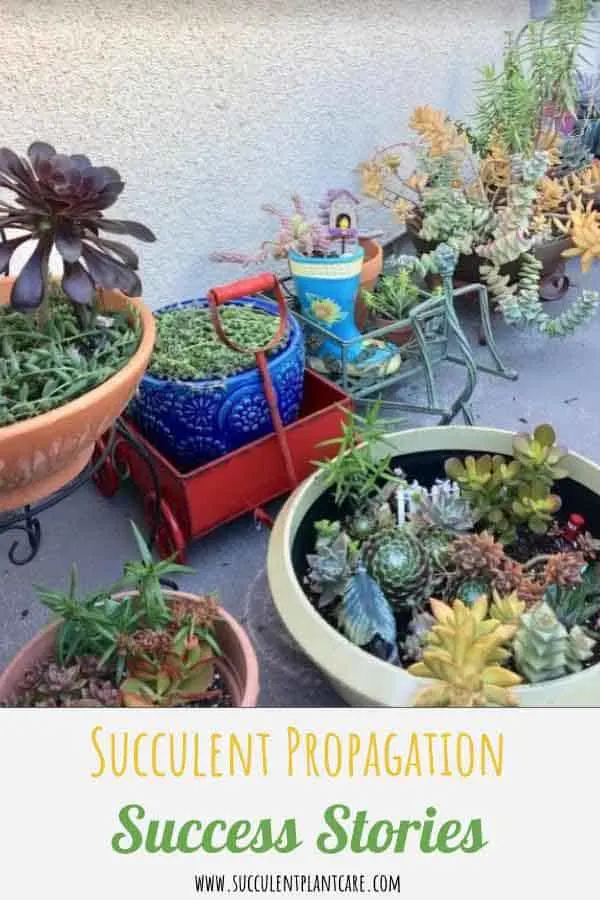How to Grow Your Succulent Collection the Cheap Way
My succulent plant collection has grown over the years thanks to propagation success. I buy a lot of my plants as small, starter plants that are usually in 2-4 inch (5-10 cm) nursery pots.
I like buying them small because I take pleasure in seeing the plants grow and multiply overtime. I get a sense of satisfaction in seeing the plant grow and thrive under my care. Plus, smaller plants cost less money and does not put a dent on my budget.

What is Propagation?
As succulent plants grow, they produce pups or babies on their own. Plant propagation is the process of creating new plants from already existing plants. Plant propagation can happen naturally. A new plant can emerge out of a fallen leaf or a broken stem. In the wild, plant propagation from seeds is the most common method.
You can also propagate your existing plants yourself through cuttings from stems or leaves, by harvesting seeds, and from pups or offshoots. For more details and step by step guide on succulent propagation, please click on “Detailed Succulent Propagation Techniques.” Certain species are easier to propagate than others.
I have shared success stories of some of my easiest succulent plants to propagate from stem cuttings –please click on “Easiest Way to Propagate Succulents” to read those stories.
My propagation success stories:
Crassula Ovata or Jade Plant Propagation
This is a plant that I have had great success propagating from. If you are new to succulent plant care, jade plants are good beginner plants because they are one of the easiest plants to care for. They are highly forgiving and easy going plants. Jade plants are native to South Africa and Mozambique. Also known to some as money tree, lucky plant or friendship tree, jade plants are one of the most popular and common succulents out there. Their leaves range in color from dark green in the shade to red on the edges when exposed to direct sunlight.
The easiest way I propagate my jade plants is through stem cuttings. Another easy way to propagate jade plants is from leaf cuttings. I have had success with both but I find propagating from stem cuttings take faster. Their stem root very easily from cuttings that can be planted to start a new plant.
Here is my very first jade plant. It has grown quite large and top heavy. When I first bought this plant it came in a 6 inch pot and was much smaller than this. I had since repotted it into this pot. It blooms every year for me. Jade plants tend to get top heavy overtime. Pruning or trimming the plant every now and then can help maintain its shape.
The stem cuttings that I get from trimming the plant are not discarded. I let the cuttings dry and stick them in soil to start as new plants. Out of this plant here, I have started a lot of new plants and have placed jade cuttings in other arrangements. The fallen leaves from these plants root easily as well. I simply throw the fallen leaves in the pot and let nature do its work. A lot of the leaves root and grow new plants, but they take a lot longer than the stem cuttings.
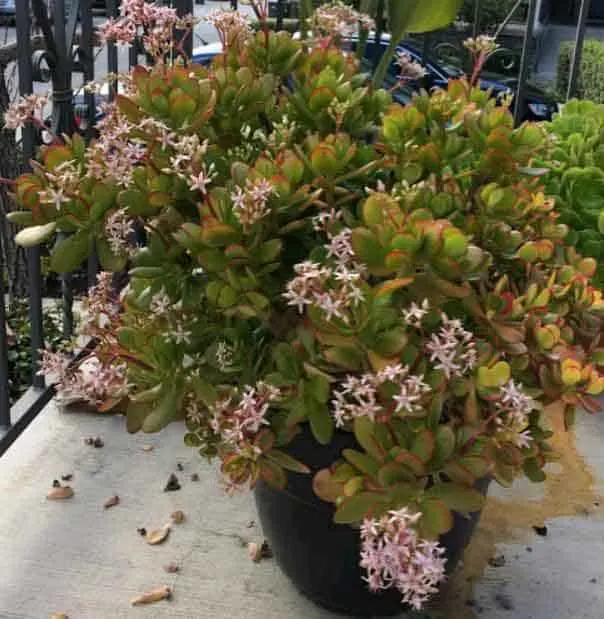
Here are some of the stem cuttings I have growing in three different pots from this jade plant above:
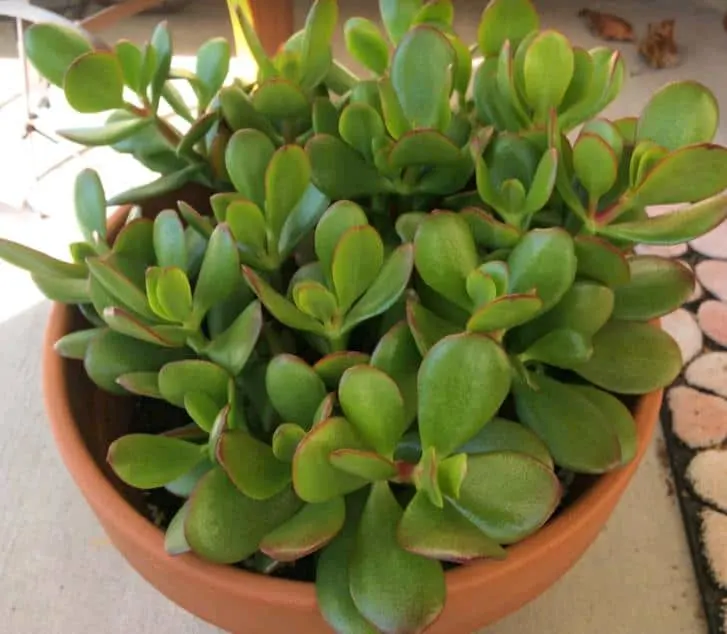
This plant is one of the easiest to propagate and multiply. I have given away cuttings and baby plants to friends and family.
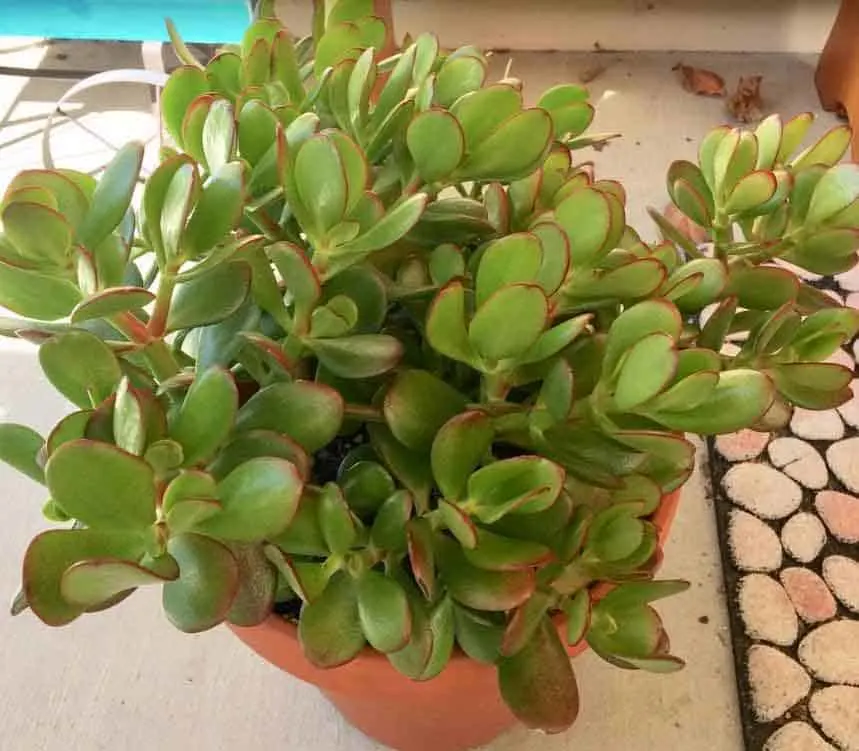
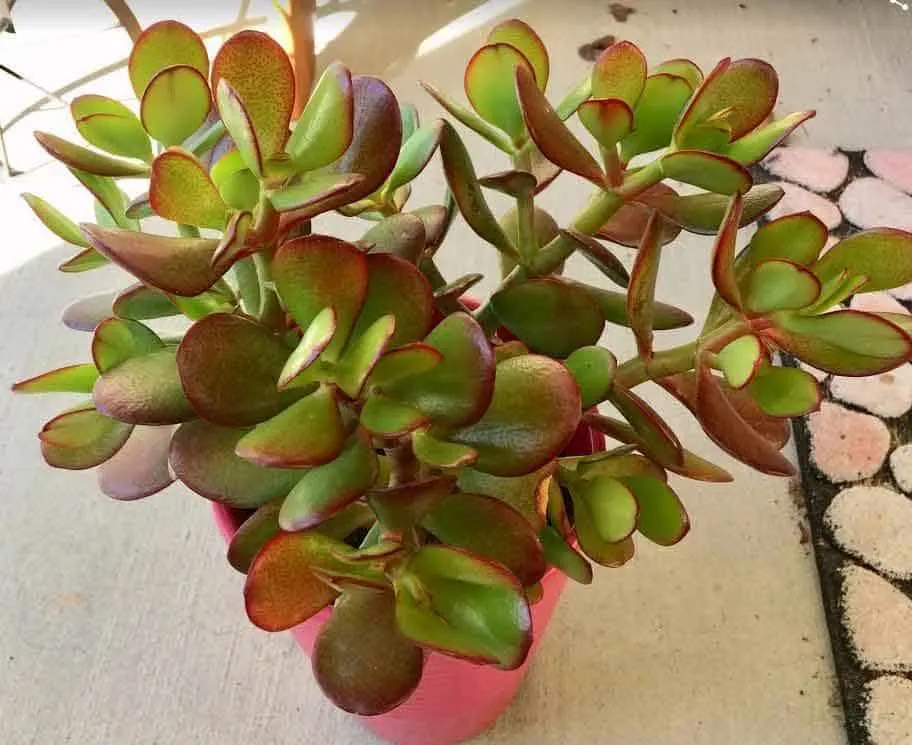

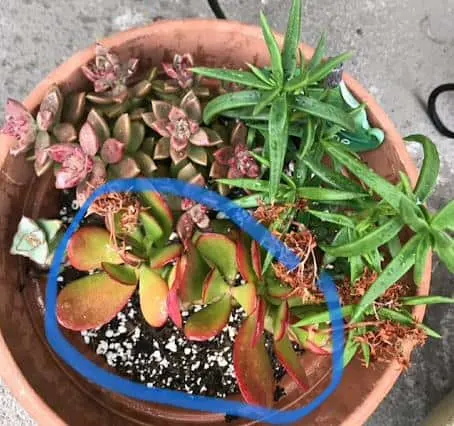
Stem and leaf cuttings from the original plant above growing in other planters:
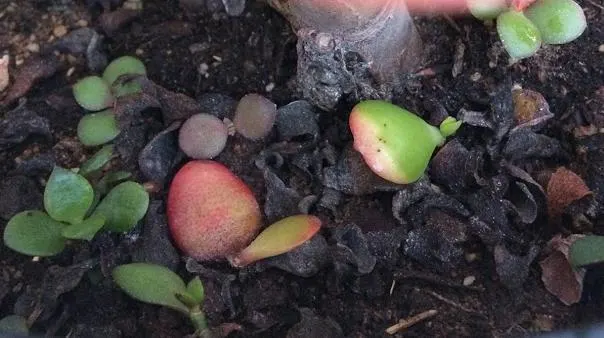
Some babies growing from fallen leaves I have thrown back into the pot. You will also have success in propagating a jade plant from leaves but it takes longer than stem cuttings. You can see a lot of dead leaves here which is normal but I should remove them to prevent insects or pests from hiding and taking residence in this pot.
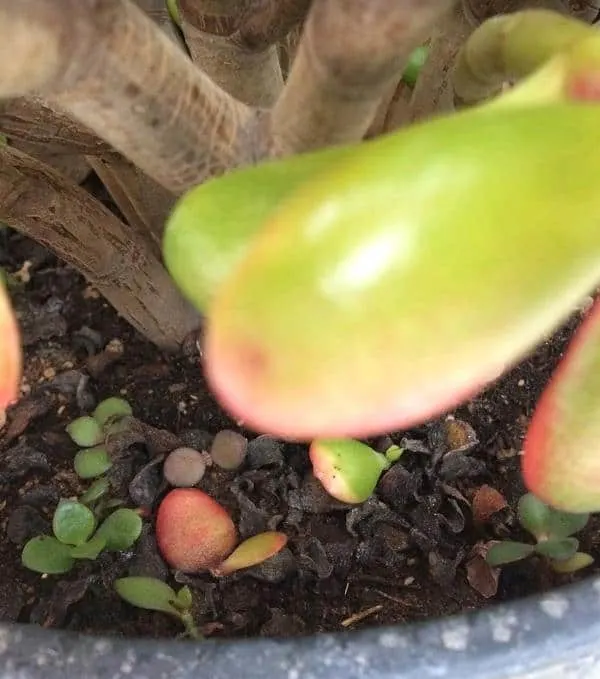
Sedum Rubrotinctum (Pork and Beans or Jelly Bean Plant)
Sedums, also known as stonecrops, are easy going plants that are often used as ground covers because of their sprawling stems. Sedum Rubrotinctum or Jelly Bean Plants have jelly bean shaped leaves that are green in the shade and turn red at the tips when exposed to full sun. They produce bright yellow, star-shaped flowers around springtime. I find these plants very easy to grow and propagate both from stem cuttings as well as from leaves.
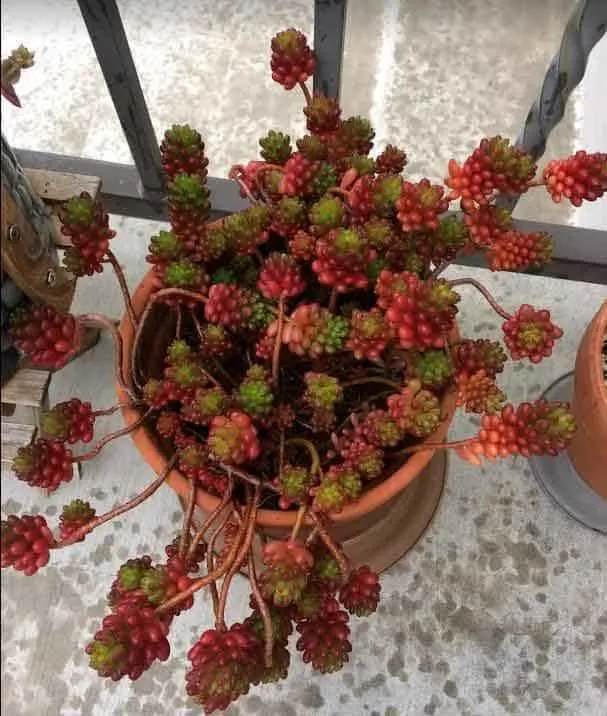
Here is a picture of my jelly bean plant that has been exposed to full sun, giving the leaves their reddish tinge. I had repotted this plant last year into this pot and it looks like it needs to be repotted again soon.
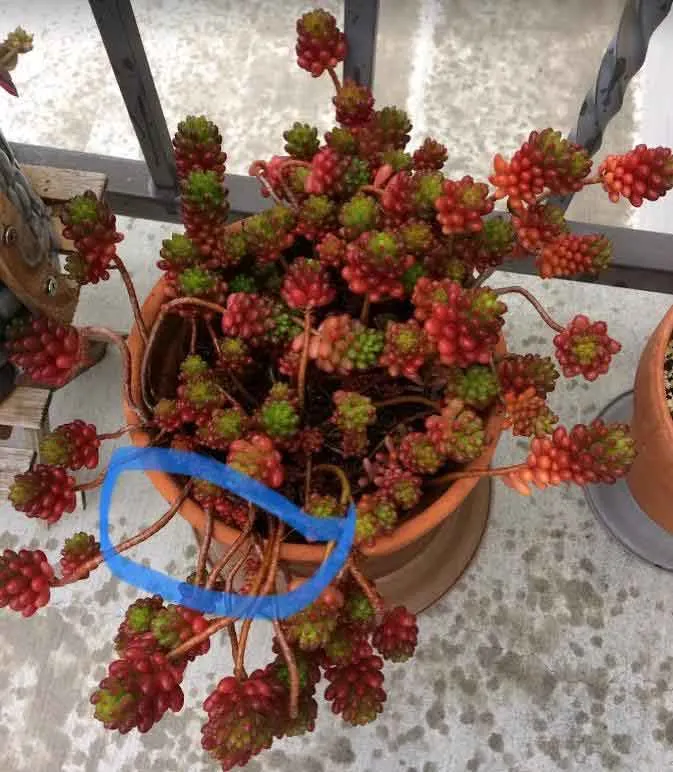
Notice the stems sprawling out as they grow. You can take cuttings from these stems to start as new plants.
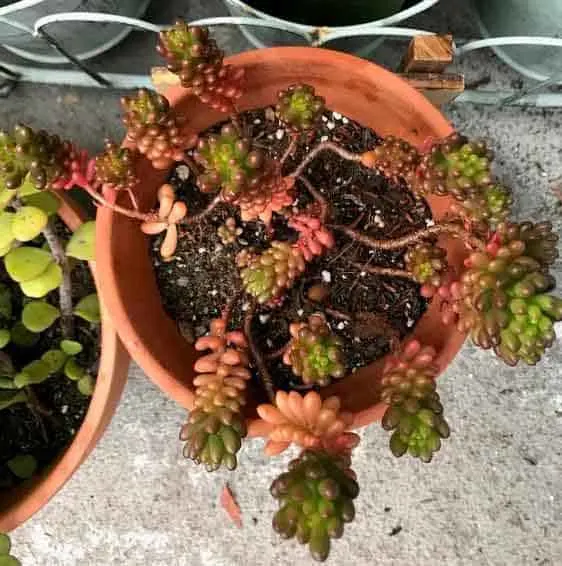
Stem cuttings growing in other pots from the plant above
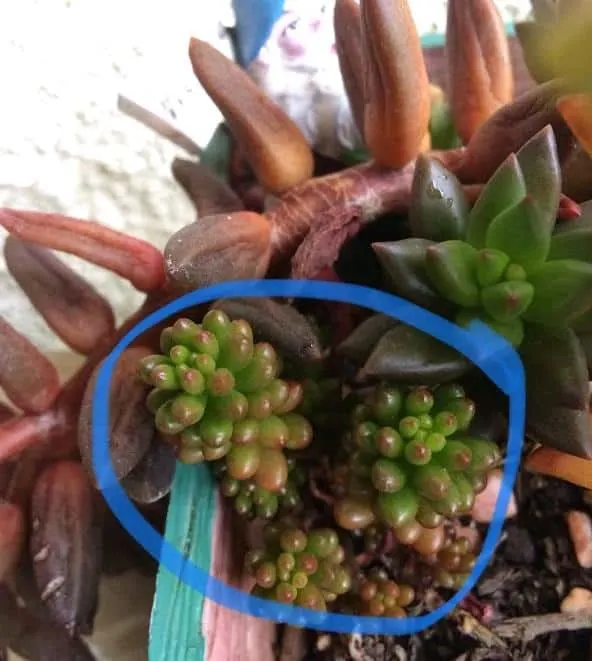
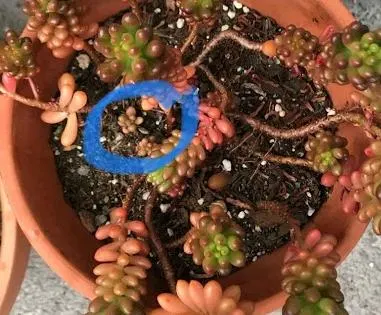
These also propagate easily from the tiny bean shaped leaves. What I do with the fallen leaves is I put them back in the pot and let them root and grow on their own.
Sedum Rubrotinctum ‘Aurora’ (Pink Pork and Beans or Pink Jelly Beans)
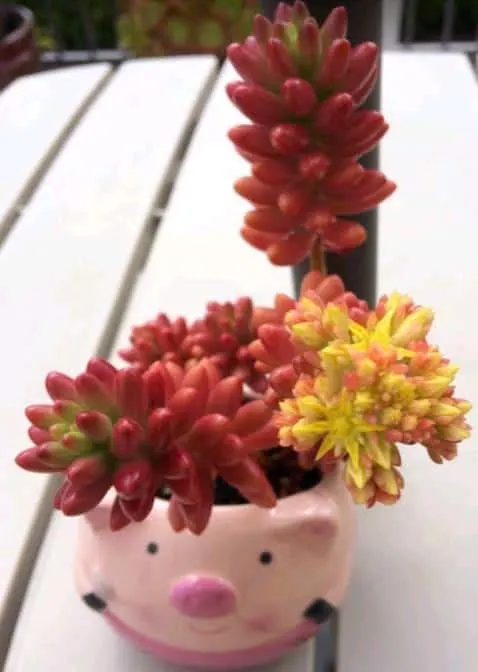
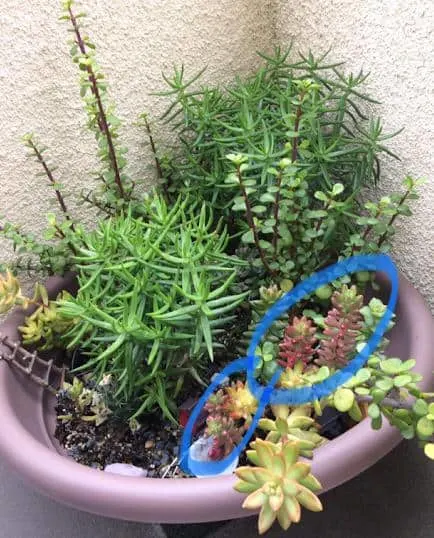
Sedum Rubrotinctum ‘Aurora’ (Pink Pork and Beans or Pink Jelly Beans) from stem cuttings
Graptopetalum ‘Copper Roses’
Native to Mexico and Arizona, Graptopetalum ‘Copper Roses’ have beautiful rosettes that are pinkish-mauve in color. They need bright light to achieve their full color potential. These plants are easy to care for. They are also easy to propagate from leaves, stem cuttings, and offshoots.
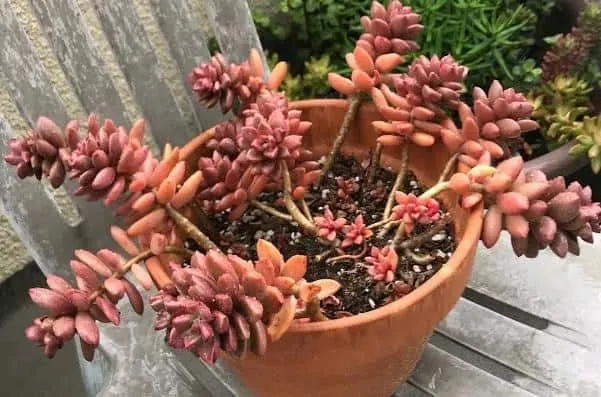
Here is my Graptopetalum ‘Copper Roses’. I love this plant’s pretty colors. This plant has been exposed to bright sunlight.

Graptopetalum ‘Copper Roses’ grown from stem cuttings



Baby plants growing from fallen leaves. I simply place fallen leaves back in the pot and they often root and grow new plants.

Offshoots and baby plants growing from the plant
Haworthia Attenuata (Zebra Plant)
Native to South Africa, this plant resembles an aloe plant at first glance. They are actually related with the same subfamily. Zebra plants have pointed green leaves and white variegated warty spots on the leaves.
When I first got this plant, it was in a small, three inch pot. It was slow growing at first when small, then quickly expanded and grew into this plant you see now. I have repotted this plant a few times since first getting it. I might need to repot this plant again into a bigger pot to provide more room for growth.
These plants propagate from pups and offshoots.
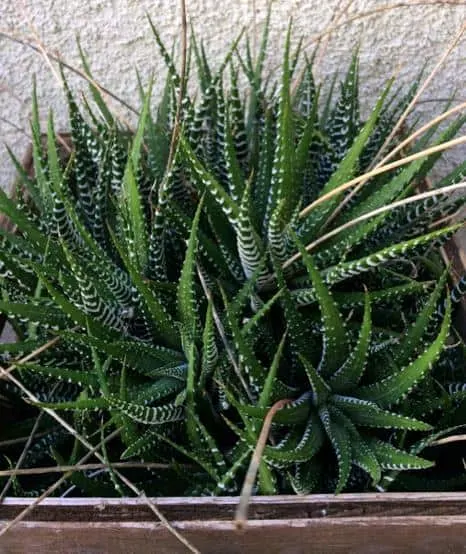
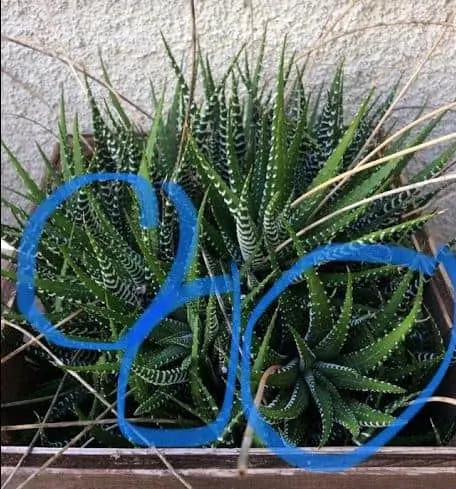
These pups can be pulled apart and separated from the mother plant and planted on their own.
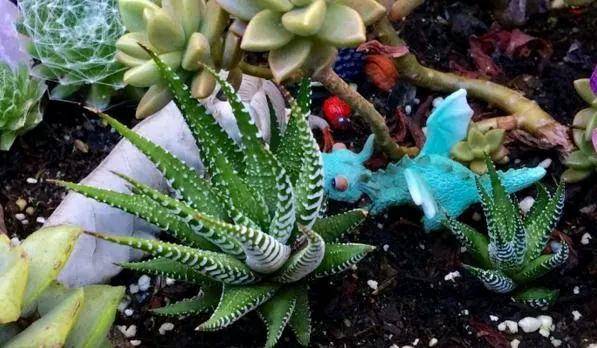
Zebra plant babies I have obtained as pups from the plant above.
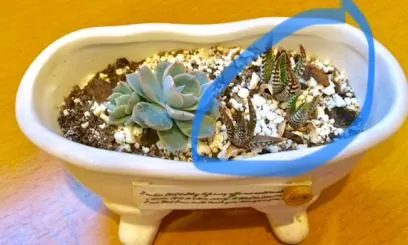
Some tiny babies I have taken as offshoots from the plant above. These are really too small to be propagated ideally but they were suffering from sunburn so I had no choice but to clip them off from their mother plant and hope they grow and survive. They seem to be doing better and I see the leaves are turning green again.
Sempervivum Arachnoideum (Cobweb Hen and Chick or Cobweb Houseleek)
Another succulent plant that produces pups are Sempervivums or Hens and Chicks. These are Sempervivum Arachnoideum or Cobweb Hens and Chicks. These are attractive plants that form tight rosettes that are green and reddish brown in color when exposed to bright sunlight. They are covered with web-like white hairs on top which gives them their unusual appearance.
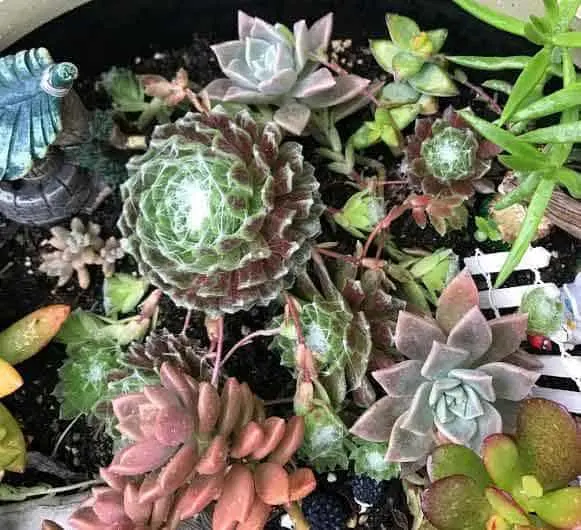
These are pretty easy going plants that produce babies from the sides of the mother plant or from the top as offshoots.
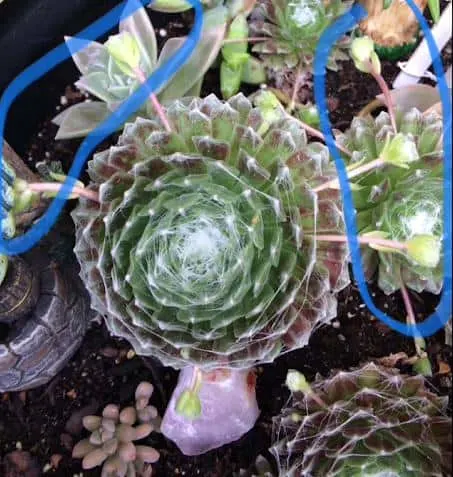
See the offshoots growing from the top. They will land on soil and root on their own. The pups can also be removed from the mother plant and planted separately when big enough. I will just leave these pups alone in this pot and let them do their thing.
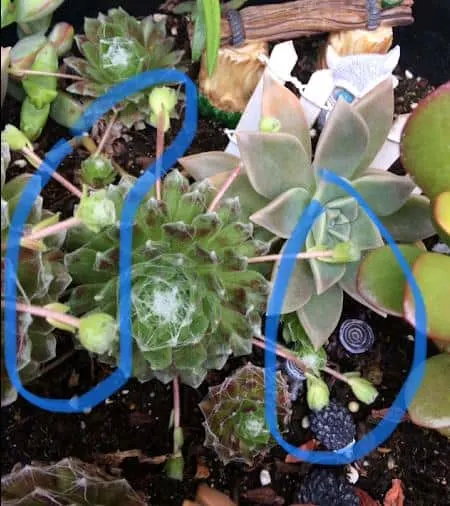
Most succulents, when left on their own, multiply and propagate naturally. You can help the process along, speed up the process, or increase the chances of success by taking extra steps. Click on “Detailed Succulent Propagation Techniques” for detailed step by step instructions on succulent propagation.
